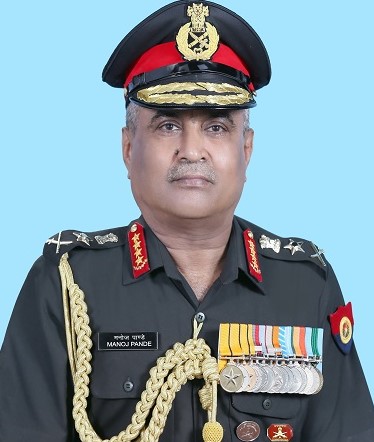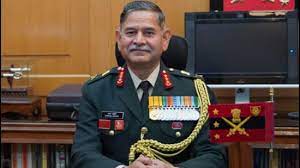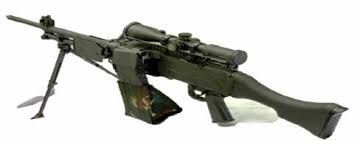At the 14th National People’s Congress, China announced its defence budget for 2024 and interestingly maintained the growth rate of its military expenditure at precisely the same percentage as last year, as Chairman Xi Jinping continues to prioritize the People’s Liberation Army (PLA) at the expense of other sectors of government funding.
Indeed, according to figures released on the opening day of the Second Annual Session of this formal gathering of China’s political leaders, the 2024 defense budget will rise 7.2 per cent to Chinese Yuan (CNY) 1.66554 trillion, which equates to USD 231.4 billion.
In contrast, the Chinese central government allocated just a 5 per cent rise in education spending to RMB 22.9 billion, and a 1.4 per cent rise in public security investment to RMB 31.6 billion.
China predicted 5 per cent growth in GDP for the coming fiscal year. However, in the last fiscal year, the government experienced a deficit of RMB 4.9 trillion (USD 690 billion) as economic realities bite.
Last year, the defense budget grew 7.2 per cent too, compared to a 7.1 per cent jump in 2022, 6.8 per cent in 2021 and just a 6.6 per cent increase in 2020.
The latter coincided with the first impact of COVID-19.
Even though the pandemic hit China hard like the rest of the world, Beijing did not significantly decelerate spending on defense.
Even though the PLA is not enjoying the double-digit percentage increases it had a decade ago – its defense budget growth has been single digits for the past nine years since 2016 – Xi continues to splurge more and more on the military each successive year.
Since Xi came to power, the defense budget has risen by a factor of 2.3.
Putting China’s spending in proper regional perspective, it is twelve times what Taiwan spends, and four times as much as Japan’s defense expenditure.
Andrew Erickson, Professor of Strategy and Research Director in the China Maritime Studies Institute of the US Naval War College, commented on China’s budget: “This incomplete figure is well above even the dubious official Chinese economic growth rate. Bottom line: Xi continues to prioritize Chinese Communist Party security goals – including pursuing control of Taiwan, while belt-tightening elsewhere.”
Erickson also quoted something President Joe Biden said last year, “Don’t tell me what you value.
Show me your budget, and I’ll tell you what you value.” In other words, China’s continued prioritization of the PLA continues unabated, despite rhetoric to the contrary.
In the lead-up to the National People’s Congress (NPC), Chinese talking heads were hinting that the increase would be reasonable and low.
This is likely because the government wanted to send the message that it was not overspending at the expense of other sectors.
However, in the end a 7.2 per cent rise in defense expenditure is a significant amount.
Delivering the budget at the staid NPC meeting, Premier Li Qiang said, “In the new year, we must thoroughly implement Xi Jinping’s thoughts on strengthening the military, implement the military strategic guidelines for the new era, adhere to the party’s absolute leadership over the people’s military…and fight hard to achieve the 100-year goal of the founding of the army.”
The aforementioned centennial occurs in 2027, by which time Xi aims to have created “a modern military”.
Qiu Zhiming, representing the scientific research community at the NPC, said: “Now there are only three years left to achieve the 100-year goal of the founding of the army.
Time is tight and the tasks are heavy. We must not have the slightest idea of taking a breath or resting. We must maintain a fighting spirit, a strong pace and a fighting attitude.”
The work report presented by Premier Li failed to mention “peaceful reunification” in relation to Taiwan.
This is worrying, and reflects Xi’s increasingly coercive attitude towards Taiwan.
Xi has encouraged the PLA to act more aggressively against Taiwan, with 1,709 aircraft sorties into the neighbor’s air defense identification zone recorded last year, compared to just 792 in 2021.
PLA delegation spokesman Wu Qian dangled both a carrot and stick for Taiwan’s benefit. “We are willing to work with the utmost sincerity and endeavor for the prospect of peaceful reunification, but we the PLA will never give the slightest room for separatist acts of ‘Taiwan independence’.
The PLA will continue to strengthen its training and preparation for war, and resolutely fight independence and promote unification.”
China continues to paint a narrative that it is merely reacting to events and to neighbors around it, that it is an unfortunate victim of strategic circumstances.
This ignores the fact that it is inexorable Chinese spending that is ringing alarm bells across the world.
A recent editorial in the PLA’s official website claimed, “The Chinese people do not follow the outdated logic that a country will invariably seek hegemony when it is strong enough, nor will they impose the suffering they once endured on others.
Since its establishment, the Chinese PLA has never initiated external wars or armed conflicts, never invaded any country or occupied an inch of foreign territory. In fact, China has not threatened any country.”
Such claims are laughable, as its violent antics in the South China Sea demonstrate, as Chinese government vessels deliberately tussle and collide with Philippine boats, for example.
There is no denying that China’s defense splurge continues to alarm neighbors, and its denial of any culpability are falling on increasingly skeptical ears.
Wu Qian said on 9 March that the goal is to “comprehensively improve strategic capacity to defend national sovereignty, security and development interests”.
The PLA delegate added, “The instability and uncertainty of the security situation we face has increased, and the task of the military struggle is arduous and burdensome.”
He also said China’s domestic anti-separatist struggle was “complex and grim”.
He noted that the increased funds would go mainly to strategic programs under the five-year plan, in order to “fully strengthen the combat readiness and preparation for war”.
Investment would also be enhanced for advanced technologies, science, logistics and key weaponry and equipment.
Representative Lu Yuncheng sang the praises of PLA reforms and progress at the NPC session: “The army’s mobile combat and three-dimensional offensive and defensive capabilities have been significantly enhanced, the navy has accelerated its transformation from offshore defense to far-sea defense, the air force has accelerated its transformation into air and space integration, both offense and defense, and the Rocket Force has continued to strengthen its nuclear and conventional capabilities and and its ability to deter war in all areas.”
Lu continued: “With the deepening of reform, new combat forces such as air assault, offshore defense, strategic delivery and precision strike are active in the military exercise field.
The allocation of forces in different strategic directions has become more complete, the scale has become more capable, the structure has been more optimized, and the organization has become more active.
The results have become more scientific, and the concept of all-arms preparation for war has been further strengthened.”
The work report pledged to improve defense industrial capacity and coordination.
China is now moving beyond civil-military integration to something it calls an “integrated national strategic system and capabilities”.
This is more than just pooling military and civilian technological and industrial resources to create synergies that benefit the PLA, for it extends to strategic capabilities stretching across China’s entire economy.
China’s economy is weakening, and this means the government can no longer give the PLA a blank check.
It therefore wants to reduce the cost of weaponry by exploiting efficiencies, which would permit it to continue fielding significant quantities.
Beijing is probably learning from Russia’s experience in Ukraine, where it sees how Russia has plowed through vast quantities of equipment and ammunition in its battle of attrition.
This policy will likely result in the PLA fielding higher volumes of low-cost weapons – such as cheaper missiles – in order to maintain inventories and stretch its budget as much as possible.
Indeed, Wu noted, “The PLA will keep in mind the idea of living with a tight budget, strengthen the concept of high efficiency and low consumption, and adhere to the principle of doing everything diligently and frugally.”
Other areas of investment are improved living and working conditions for PLA personnel, as well as an overhaul of internal military governance.
The latter relates to high-profile people caught up in corruption probes, including two defense ministers and numerous PLA generals in recent months. Naturally, the work report emphasized political loyalty.
Using canards from previous years, Wu said China’s military spending was “transparent, reasonable and appropriate”.
He added that the world would benefit from this spending, because of China’s commitments to peacekeeping, naval escorts and humanitarian assistance.
China was also at pains to point out that its defense budget as a percentage of GDP is far lower than that of the USA.
It claims defense spending has remained steady at just over 1 per cent of GDP.
However, such assertions must be taken with a grain of salt, because China’s actual defense spending is not accurately reflected in official figures.
It is widely recognized that the defense budget does not include many categories that other countries typically place in their defense budget.
For instance, China’s space program that is managed by the PLA is not included in official figures, nor are defense mobilization funds, provincial military base operating costs, military pensions and benefits, or civilian/dual-use research and development.
Other glaring absences are major paramilitary organizations like the People’s Armed Police and China Coast Guard.
Far more than law enforcement organizations, these forces supplement the PLA.
It is unclear just how large the discrepancy is between China’s reported and actual defense spending.
The Stockholm International Peace Research Institute estimated in 2022 that China’s actual budget was 27 per cent higher, and the UK-based International Institute of Strategic Studies calculated it to be 39 per cent higher than what Beijing claimed.
As for the PLA itself, it strenuously asserts, “There is no hidden expenditure problem at all.”
When others dispute its lack of budget transparency, China simply accuses them of “stirring up trouble,” a catch-all phrase that seems to make it magically exempt from having to offer any further explanation.
Representative Li Hanjun told reporters at the NPC: “If you don’t advance, you will retreat, and if you advance slowly, you will retreat.
The current and future period is a critical period or the modernization of national defense and the army.
We must keep up with the world’s military and war development trends, keep up with the modernization development process of our army, grasp the new situation and task requirements, and focus on preparing for war.
Fight wars, be brave in pioneering and innovative, strive to create a new situation in reform and strengthen the army, and constantly win new victories in deepening the reform of national defense and the army.”
As the aforementioned PLA editorial declared, “On the matter of defense expenditure, the Chinese people have the final say.
They will not base their decisions on others’ opinions, nor will they ever be swayed by other people’s words.”
Except it is the party and Xi, not the people, that have the final say.





